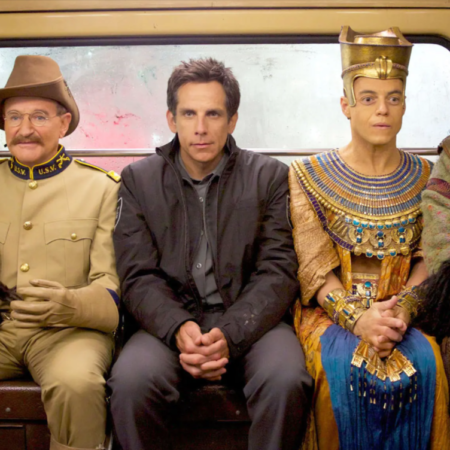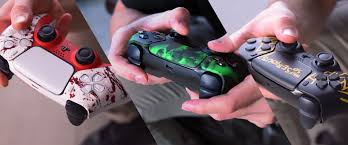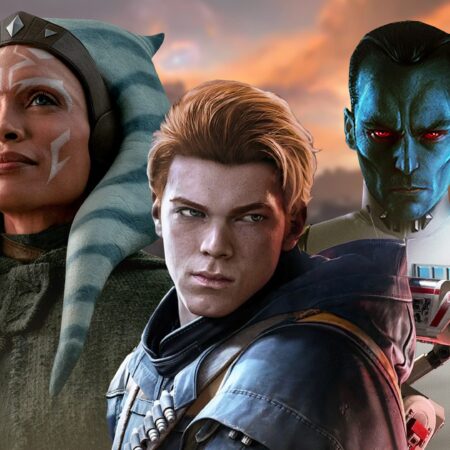Building a PC is a great way to get a custom-made computer that fits your needs and budget. It’s also a fun and rewarding project that can be completed in a weekend.
This guide will walk you through the process of building a PC, from choosing the right parts to assembling them together. We’ll also provide tips on troubleshooting common problems and getting the most out of your new computer.
By the end of this guide, you’ll have the knowledge and skills you need to build a PC that’s perfect for you.
What you need to know before building a PC
Before you start building your PC, there are a few things you need to know.
- You need to have a good understanding of the different components of a computer and how they work together.
- You need to be able to read and follow instructions.
- You need to have the patience to work on a project that can take several hours to complete.
- You need to have the tools and materials necessary to build a PC.
If you are not sure if you have the skills and knowledge necessary to build a PC, it is a good idea to read some tutorials or watch some videos on the subject. You can also find helpful information on the websites of major PC manufacturers.
Once you have a good understanding of the process, you can start gathering the parts you need for your PC.
Choosing the right parts for your PC
The first step in building a PC is choosing the right parts. This can be a daunting task, as there are many different components to choose from. However, by following a few simple guidelines, you can make the process much easier.
Here are a few things to keep in mind when choosing parts for your PC:
- **Your budget:** The amount of money you have to spend will obviously be a major factor in determining which parts you can buy. However, it is important to remember that you don’t need to spend a fortune to build a good PC.
- **Your needs:** What will you be using your PC for? If you only plan on using it for basic tasks, such as web browsing and email, you won’t need to spend as much money as someone who plans on gaming or video editing.
- **Compatibility:** Make sure that the parts you choose are compatible with each other. This means that they will fit together physically and that they will work together properly.
Once you have considered these factors, you can start to choose the specific parts for your PC. Here are a few of the most important components to consider:
- **CPU:** The CPU is the brain of your PC. It is responsible for processing all of the instructions that your computer receives. When choosing a CPU, you will need to consider the number of cores, the clock speed, and the cache size.
- **GPU:** The GPU is responsible for rendering graphics. If you plan on gaming or video editing, you will need a powerful GPU.
- **RAM:** RAM is temporary storage that your computer uses to store data that is being processed. The more RAM you have, the faster your computer will be able to perform tasks.
- **Storage:** Your storage drive will hold your operating system, programs, and files. You will need to choose between a hard drive (HDD) and a solid-state drive (SSD). HDDs are cheaper but slower, while SSDs are more expensive but faster.
- **Power supply:** The power supply provides power to all of the components in your PC. You will need to choose a power supply that is powerful enough to support all of your components.
By following these guidelines, you can choose the right parts for your PC and build a system that meets your needs.
4. Building your PC
Once you have gathered all of the parts for your PC, you can begin to build it. The process of building a PC is relatively simple, but it is important to be careful and to follow the instructions carefully.
The first step is to install the motherboard into the case. The motherboard is the main component of a PC, and it is responsible for connecting all of the other components together. Once the motherboard is installed, you can install the CPU, RAM, and graphics card.
After you have installed the major components, you can connect the power supply and the hard drive. The power supply provides power to the PC, and the hard drive stores data. Once the power supply and hard drive are connected, you can install the operating system.
Installing the operating system is the final step in building a PC. The operating system is responsible for managing the resources of the PC, and it provides the user interface. Once the operating system is installed, you can start using your new PC.
“`
5. Installing the operating system
Once you have built your PC, you will need to install an operating system. This is the software that will control your computer and allow you to use it for tasks such as browsing the internet, playing games, and creating documents.
There are many different operating systems available, but the most popular ones for PCs are Windows, macOS, and Linux. Each operating system has its own advantages and disadvantages, so you will need to decide which one is right for you.
To install an operating system, you will need to download the installation files from the manufacturer’s website. Once you have downloaded the files, you can follow the instructions on the website to install the operating system.
Installing an operating system can be a complex process, so if you are not comfortable doing it yourself, you can always take your PC to a computer repair shop and have them do it for you.
How to Build a PC
Building a PC can be a fun and rewarding experience, but it can also be a daunting task if you’re not sure where to start. This guide will walk you through the process of building a PC, from choosing the right parts to assembling and installing the operating system.
What you need to know before building a PC
Before you start building your PC, there are a few things you need to know. First, you need to decide what you want your PC to do. Do you want to game, create content, or just use it for everyday tasks? Once you know what you need your PC for, you can start choosing the parts that you need.
Here are some of the things you need to consider when choosing parts for your PC:
- CPU
- GPU
- RAM
- Storage
- Power supply
- Case
- Cooling
You can learn more about each of these components in our how to build a PC guide.
Choosing the right parts for your PC
Once you know what you need your PC to do, you can start choosing the parts that you need. Here are a few tips for choosing the right parts:
- Don’t overspend on your CPU. The CPU is the most important component of your PC, but it’s also the most expensive. If you’re not planning on doing any serious gaming or video editing, you can save money by getting a less powerful CPU.
- Get a good graphics card if you’re going to be gaming. The graphics card is responsible for rendering graphics, so it’s important to get a good one if you plan on playing games.
- Don’t skimp on RAM. RAM is used to store data that your CPU is currently working on, so it’s important to have enough RAM to avoid slowdowns.
- Get a large enough storage drive. Your storage drive is where you’ll store your operating system, programs, and files. It’s important to get a large enough drive so that you don’t run out of space.
You can learn more about choosing the right parts for your PC in our how to build a PC guide.
Building your PC
Once you have all of the parts for your PC, you can start building it. Here are a few tips for building your PC:
- Read the instructions carefully. The instructions that come with your motherboard will walk you through the process of building your PC.
- Be careful not to static shock your components. Static electricity can damage your components, so it’s important to take precautions to avoid static shock.
- Double-check your connections. It’s easy to make a mistake when connecting your components, so it’s important to double-check your connections before you turn on your PC.
You can learn more about building your PC in our how to build a PC guide.
Installing the operating system
Once you have built your PC, you need to install the operating system. Here are a few tips for installing the operating system:
- Download the operating system to a USB drive. You can download the operating system from the manufacturer’s website.
- Boot your PC from the USB drive. To do this, you’ll need to change the boot order in your BIOS.
- Follow the on-screen instructions to install the operating system.
You can learn more
7. Setting up your PC
Once you have built your PC, it is time to set it up. This includes installing the operating system, drivers, and other software.
**Installing the operating system**
The first step is to install the operating system. This is usually done by using a USB drive or DVD. If you are using a USB drive, you will need to create a bootable USB drive. You can do this by using a tool such as Rufus. Once you have created the bootable USB drive, you can insert it into your PC and boot from it.
Once you have booted from the USB drive, you will be prompted to install the operating system. Follow the on-screen instructions to complete the installation.
**Installing drivers**
After you have installed the operating system, you will need to install the drivers for your hardware. Drivers are small software programs that allow your operating system to communicate with your hardware. You can usually find the drivers for your hardware on the manufacturer’s website.
**Installing other software**
Once you have installed the operating system and drivers, you can install any other software that you need. This could include software for web browsing, email, gaming, and productivity. You can find software for your PC on the internet or in stores.
**Setting up your PC**
Once you have installed all of the necessary software, you can start setting up your PC. This includes creating a user account, setting up your preferences, and connecting to the internet.
**Creating a user account**
When you first log in to your PC, you will be prompted to create a user account. This is an account that you will use to log in to your PC. You can create multiple user accounts for different people who use your PC.
**Setting up your preferences**
After you have created a user account, you can start setting up your preferences. This includes setting your desktop background, choosing your default programs, and adjusting your mouse and keyboard settings.
**Connecting to the internet**
Once you have finished setting up your PC, you can connect it to the internet. You can connect to the internet using a wired connection or a wireless connection.
**Troubleshooting common problems**
Once you have set up your PC, you may encounter some problems. Here are some common problems and how to troubleshoot them:
- **The PC won’t boot**If your PC won’t boot, there are a few things you can check. First, make sure that the power cable is plugged in properly. Second, make sure that the power switch is turned on. Third, try resetting the CMOS. Fourth, try removing the CMOS battery and then reinserting it.
- **The PC is slow**If your PC is slow, there are a few things you can check. First, make sure that you have enough RAM. Second, make sure that you have enough storage space. Third, make sure that you have the latest drivers installed. Fourth, try defragmenting your hard drive.
- **The PC is making strange noises**If your PC is making strange noises, there are a few things you can check. First, make sure that the fans are clean and free of dust. Second, make sure that the hard drive is not making any unusual noises. Third, make sure that the power supply is not making any unusual noises.
- **The PC is not connecting to the internet**If your PC is not connecting to the internet, there are a few things you can check. First, make sure that you are connected to the correct network. Second, make sure that your network is working properly. Third, make sure that your network adapter is properly installed. Fourth, try restarting your PC.
Troubleshooting common problems
Once you have built your PC, you may encounter some problems. Here are some common problems and how to troubleshoot them:
- **The PC won’t turn on.** This is usually caused by a problem with the power supply. Make sure that the power supply is plugged in correctly and that the power switch is turned on. If the problem persists, you may need to replace the power supply.
- **The PC is not recognized by the operating system.** This is usually caused by a problem with the motherboard. Make sure that the motherboard is properly seated in the case and that all of the cables are connected correctly. If the problem persists, you may need to replace the motherboard.
- **The PC is running slowly.** This can be caused by a number of factors, including a slow processor, a lack of RAM, or a hard drive that is full. To improve performance, you can upgrade your processor, add more RAM, or install a solid-state drive.
- **The PC is overheating.** This can be caused by a number of factors, including a lack of airflow, a faulty CPU cooler, or a dusty case. To fix the problem, you can improve airflow by adding more case fans, replace the CPU cooler, or clean the inside of the case.
If you are unable to troubleshoot the problem yourself, you can take your PC to a computer repair shop for assistance.
Tips for building a gaming PC
Here are a few tips for building a gaming PC:
- Start with a budget in mind.
- Choose the right components for your needs.
- Don’t skimp on the power supply.
- Make sure your case has enough airflow.
- Test your system before you start gaming.
For more detailed information on building a gaming PC, check out our guide: How to Build a Gaming PC.
Conclusion
In this article, we have provided a step-by-step guide on how to build a PC. We hope that this information has been helpful and that you are now confident in your ability to build your own computer. If you have any questions or concerns, please feel free to leave a comment below.
11. Resources
Here are some resources that you can use to learn more about building a PC:
- How to Geek’s guide to building a PC
- Tom’s Hardware’s guide to building a PC
- Newegg’s guide to building a PC
You can also find many helpful tutorials on YouTube. Just search for “how to build a PC” and you’ll find a variety of videos that can teach you everything you need to know.








